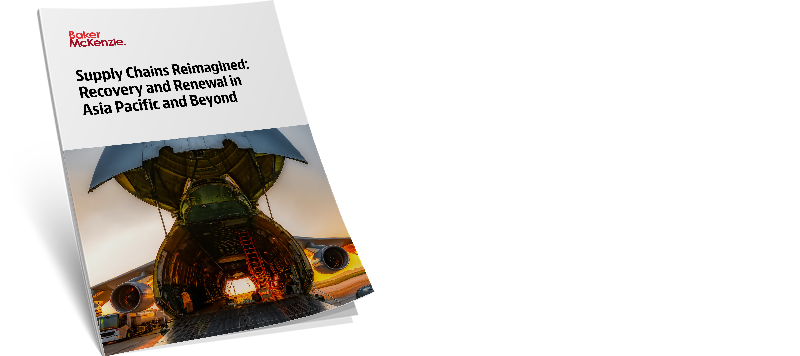Global supply chain disruption is both a cause and effect of the major global market slowdown in the wake of the COVID-19 pandemic. This disruption has amplified existing supply chain digitalization and diversification issues for global companies with current or intended supply chain operations in Asia Pacific.
As businesses and economies reopen and demand increases, attention is now shifting toward seeking recovery of global supply chains . Currently, demand remains below 2019 levels — and is expected to remain so for an extended period. Hence, whether companies are looking to enter or move supply chain operations around or away from the Asia Pacific region, they are increasingly motivated to secure lower-cost suppliers and focus their efforts on maintaining their financial health in the short to medium-term.
Our latest report, Supply Chains Reimagined: Recovery and Renewal in Asia Pacific and Beyond, features analysis of global export market share data from Silk Road Associates collated across 350 product categories and 150 countries. It also integrates insights from industry thought leaders on key supply chain challenges and business strategies. The report also shows the differentiated pace of industry-specific global supply chain movement, including challenges, opportunities, shifting manufacturing patterns and the impact of government intervention schemes.
What are the report's key sector takeaways?
- As Consumer Goods & Retail companies plan for supply chain renewal, it will be key to consider the strengths of China's scale and vertical supply chains, balanced against other emerging market opportunities. Any rapid shifts to supply chains can only be sustained after investments are made to increase manufacturing capacity in the new country.
- The global EMI supply chain is among the least impacted as compared with other industries. Three key current trends will continue to be played out: the emergence of competitors to China; competition for emerging markets and US EMI investment in Chinese manufacturing.
- For the Healthcare and Life Sciences sector, COVID-19 related mandates will affect PPE supply chain. Governments will seek to build confidence and resiliency in pharmaceutical supply chains post-COVID-19. A greater focus on localization of supply chains may also spur smart manufacturing, such as the use of data analytics to manage inventories and drug distribution, especially during virus spikes, or the use of AI for quality control during production.
- IMT companies will seek financing to rebuild and re-strategize their supply chains to reduce their exposure to single-source suppliers especially to provide added protection against significant supply chain disruption like that experienced due to the pandemic and trade wars.
- TMT production has been moving toward Vietnam and Mexico prior to the rise of US-China trade tensions and in response to two main influences: rising labor costs in China and a desire to diversify production. This trend is set to continue in the next few years even as manufacturers add to their list of production destinations.


